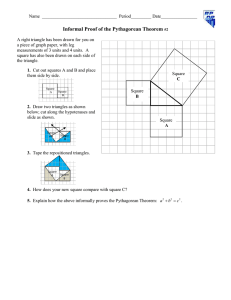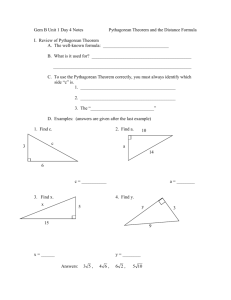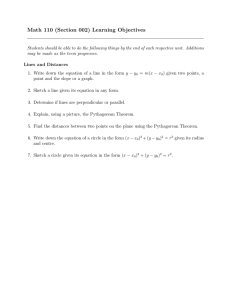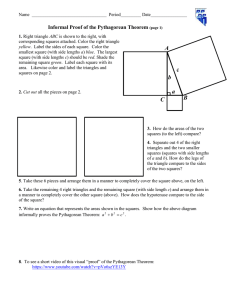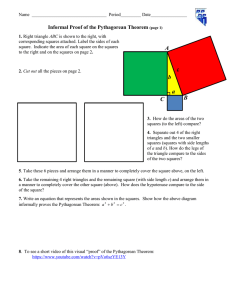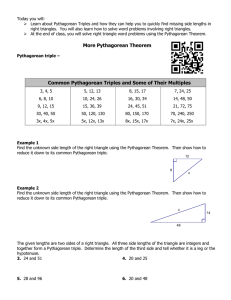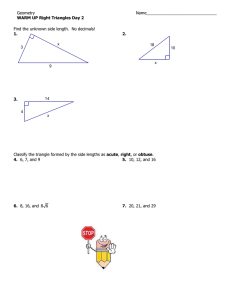Worksheet from Easy as A, B, C
advertisement
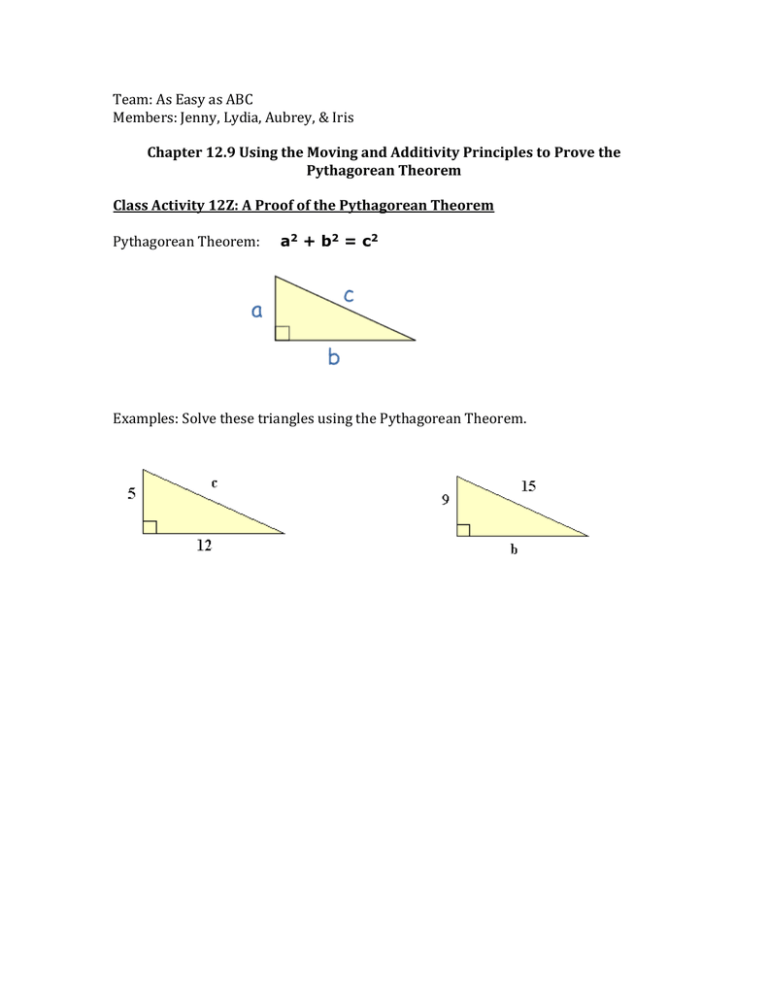
Team: As Easy as ABC Members: Jenny, Lydia, Aubrey, & Iris Chapter 12.9 Using the Moving and Additivity Principles to Prove the Pythagorean Theorem Class Activity 12Z: A Proof of the Pythagorean Theorem Pythagorean Theorem: a2 + b2 = c2 Examples: Solve these triangles using the Pythagorean Theorem. Proof of the Pythagorean Theorem: In your group: The following shows a square and triangles. All the triangles shown are copies of our original right triangle with sides of lengths a, b, and c. The square shapes have all 4 sides the same length and 4 angles right angles, making them true squares. Fill in the bigger square that has the side lengths a + b with triangle and squares without gaps or overlaps. Use the following square to draw what you have created. Now use the moving and additivity principles about areas to explain why a2 + b2 = c2 (a + b) (a + b) = c2 + 4(½ a + b)

